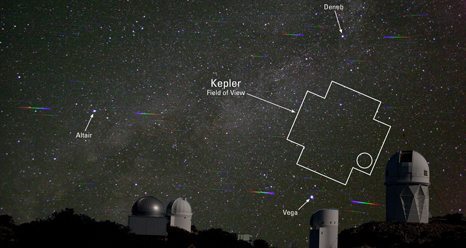NASA’s Kepler mission has confirmed its first planet in the “habitable zone,” the region where liquid water could exist on a planet’s surface, on a planet close to a sun-like star.
Kepler also has discovered more than 1,000 new planet candidates, nearly doubling its previously known count. Ten of these candidates are near-Earth-size and orbit in the habitable zone of their host star. The newly confirmed planet, Kepler-22b, is the smallest yet found to orbit in the middle of the habitable zone of a star similar to our Sun. The planet is about 2.4 times the radius of Earth.
Scientists don’t yet know if Kepler-22b has a predominantly rocky, gaseous or liquid composition, but its discovery is a step closer to finding Earth-like planets. “This is a major milestone on the road to finding Earth’s twin,” said Douglas Hudgins, Kepler program scientist at NASA Headquarters in Washington. “Kepler’s results continue to demonstrate the importance of NASA’s science missions, which aim to answer some of the biggest questions about our place in the universe.” 
Kepler discovers planets and planet candidates by measuring dips in the brightness of more than 150,000 stars to search for planets that cross in front, or “transit,” the stars. Kepler requires at least three transits to verify a signal as a planet. Kepler-22b is located 600 light-years away. While the planet is larger than Earth, its orbit of 290 days around a Sun-like star resembles that of our world. The planet’s host star belongs to the same class as our Sun, called G-type, although it is slightly smaller and cooler.
Source: NASA:
http://www.nasa.gov/kepler

The aim of art is to represent not the outward appearance of things, but their inward significance. – Aristotle















